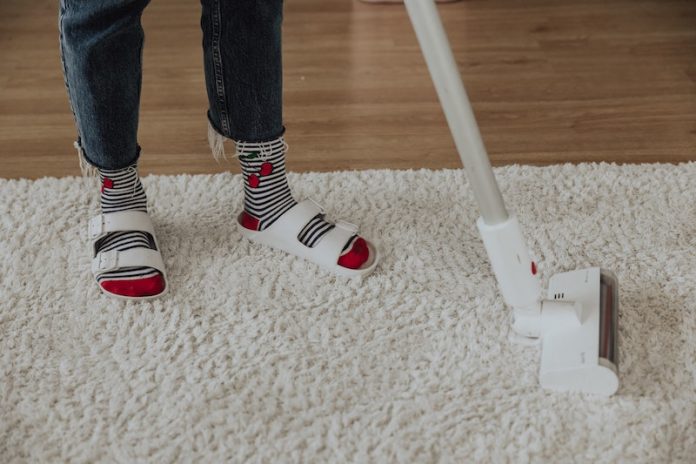
Even after regular smoking has ceased, tobacco’s residues, known as thirdhand smoke, remain on indoor surfaces, posing as a source of indoor pollutants.
A study by the Department of Energy’s Lawrence Berkeley National Laboratory (Berkeley Lab) has found that carpets, in particular, act as a significant reservoir of these tobacco contaminants.
Carpets and Tobacco Residues
Thirdhand smoke does not remain static. Once settled on surfaces, its chemicals can re-emerge into the air, sometimes evolving into other contaminants.
The study recognized carpets as a major collector of thirdhand smoke.
Cleaning Carpets: The Ozonation Method
The study explored the impact of ozonation—a prevalent cleaning method—on smoke-affected carpets.
Researchers examined old smoke-contaminated carpets from San Diego homes and new carpets exposed to fresh smoke in a laboratory setting.
While ozonation was somewhat successful in extracting compounds known as polycyclic aromatic hydrocarbons from both carpet samples, it was largely ineffectual in eliminating deeply seated nicotine.
This is due to the fibers and chemicals in the carpet acting as a shield.
The study, funded by the University of California Tobacco-Related Disease Research Program, emphasized the importance of carpets as a source of thirdhand smoke contaminants.
Berkeley Lab researcher Xiaochen Tang noted that ozone’s inability to penetrate deep into materials limits its effectiveness in long-term cleaning.
Therefore, in cases of carpets, the most effective solution might be to completely replace them.
Ozone Generators: A Double-Edged Sword
Earlier research from Berkeley Lab had found that ozonation could remove tobacco pollutants from a room. However, this study only considered freshly created thirdhand smoke.
Ozone generators work by emitting ozone gas to neutralize harmful compounds in the air and on surfaces.
Yet, these generators can also release a spurt of contaminants, necessitating ventilation and a delay before reoccupying a space post ozonation.
Berkeley Lab Senior Scientist Hugo Destaillats remarked that while ozone generators efficiently eliminate odors, this might lead to an illusory sense of effectiveness.
He said, “Just because you can’t smell it, doesn’t mean all the harmful contaminants have been eradicated.”
The research will now shift focus to other indoor reservoirs of thirdhand smoke contaminants, like drywall and upholstery.
The study is published in Environmental Science & Technology.



